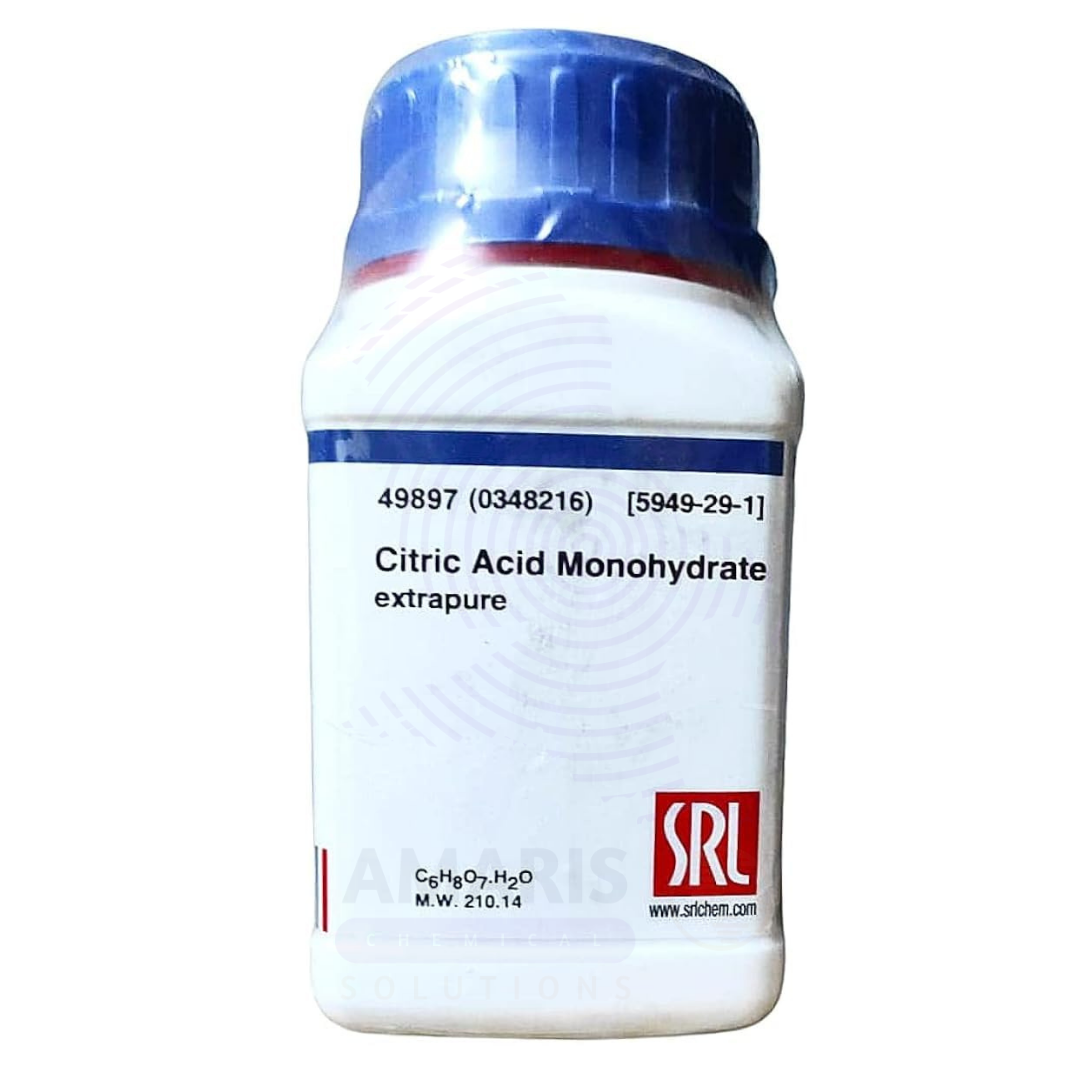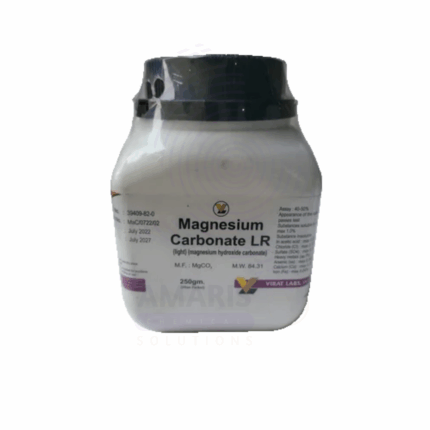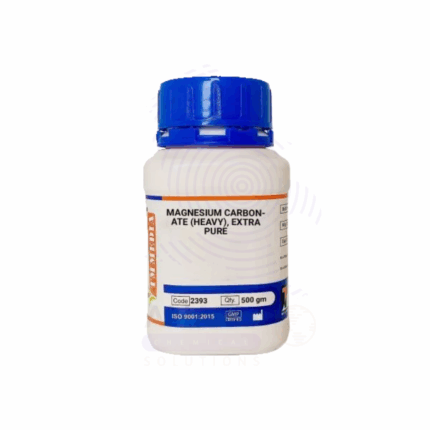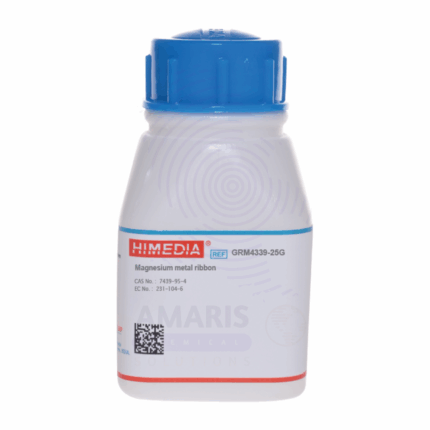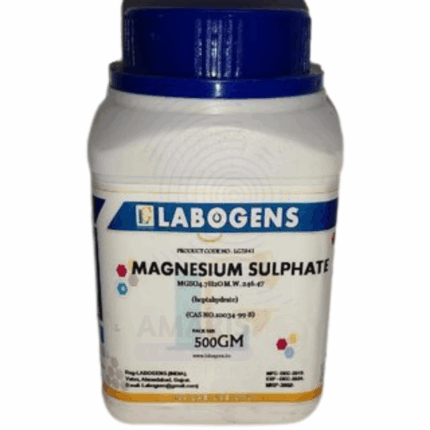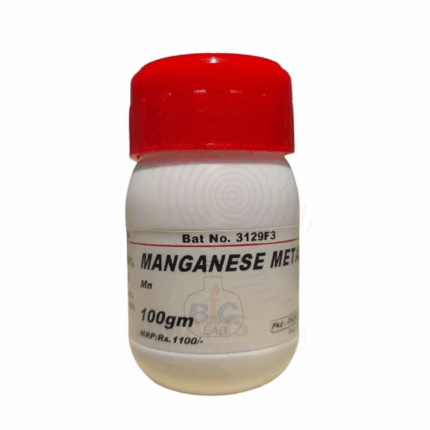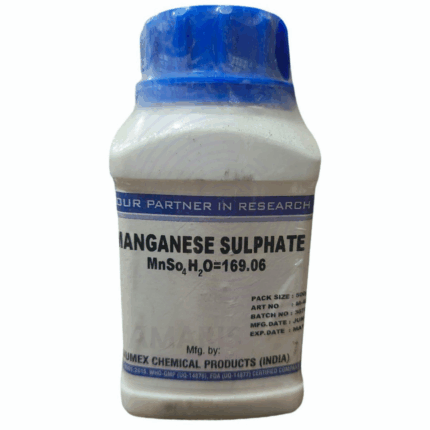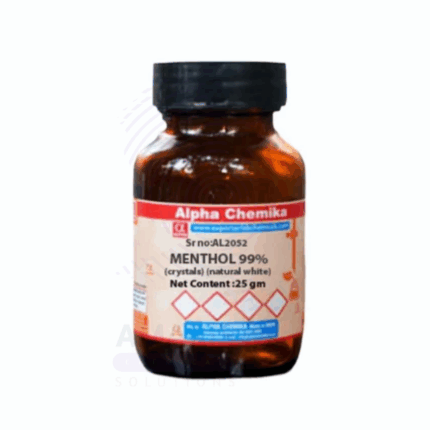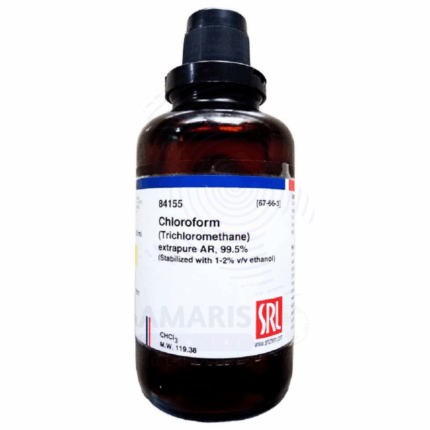
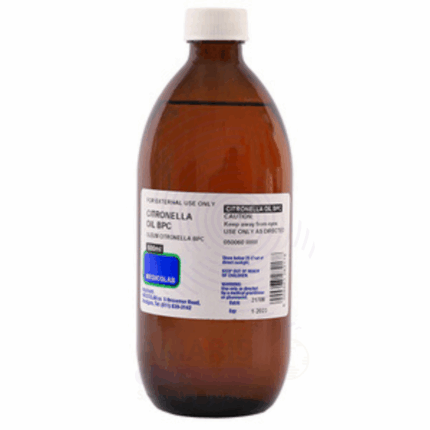
Citric Acid Monohydrate Extra Pure
$ 18.00 Original price was: $ 18.00.$ 17.83Current price is: $ 17.83.
Citric Acid Monohydrate Extra Pure is a highly refined, crystalline organic acid commonly used in laboratory settings for its chelating, buffering, and acidifying properties. With one molecule of water of crystallization, it serves as a reliable pH adjuster and complexing agent in analytical chemistry, titrations, and biochemical experiments. Its extra pure grade ensures minimal contaminants, making it suitable for sensitive applications in pharmaceutical research, food analysis, and preparation of reagent solutions. Soluble in water and ethanol, it is stable under normal lab conditions but should be stored in a cool, dry place in tightly sealed containers to prevent clumping and moisture absorption.
Citric Acid Monohydrate Extra Pure
Primary Uses
- Buffer Preparation
- Commonly used to prepare citrate buffers for maintaining acidic to neutral pH (3.0–6.2) in biochemical and analytical experiments.
- Chelating Agent
- Binds to metal ions like Ca²⁺, Mg²⁺, and Fe³⁺ in complexometric titrations or metal ion removal experiments.
- Standard for Titration
- Used in acid-base titration to calibrate alkaline solutions or as a primary standard in volumetric analysis.
- pH Adjustment
- Added to experimental media and solutions to adjust and stabilize pH, especially in microbial and enzymatic studies.
Secondary Uses
- Analytical Reagent
- Employed in colorimetric tests or precipitation reactions involving metal ions.
- Carbon Source in Microbiology
- Serves as an organic carbon source in selective culture media for microbial growth.
- Cleaning Agent in Laboratory Equipment
- Helps remove limescale or metal salt deposits from lab glassware or metal instruments without the use of strong acids.
- Precursor for Citrate Salts
- Used in the synthesis of other laboratory-grade chemicals like sodium citrate or ammonium citrate.
| PACK SIZE |
500 grams Plastic Tin |
|---|
1. Basic Identification Attributes
- Chemical Name: Citric Acid Monohydrate
- CAS Number: 5949-29-1
- HS Code: 2918.14.00
- Molecular Formula: C₆H₈O₇·H₂O
- Molecular Weight: 210.14 g/mol
- Synonyms: 2-Hydroxy-1,2,3-propane-tricarboxylic acid monohydrate
2. Physical & Chemical Properties
- Appearance: Colorless to white crystalline powder
- Odor: Odorless
- Taste: Strongly acidic (sour)
- Solubility: Freely soluble in water (59 g/100 mL at 20°C), soluble in ethanol
- Melting Point: ~100°C (decomposes with loss of water)
- Density: ~1.542 g/cm³
- pH (1% solution): ~2.2
3. Safety & Hazard Attributes
- GHS Classification:
- H319: Causes serious eye irritation
- NFPA Ratings:
- Health: 1
- Flammability: 0
- Reactivity: 0
- First Aid Measures:
- Inhalation: Move to fresh air, rinse nose with water
- Skin/Eyes: Rinse thoroughly with water for several minutes
- Ingestion: Rinse mouth and drink water; generally regarded as safe in small quantities
4. Storage & Handling Attributes
- Storage Conditions:
- Store in a cool, dry, well-ventilated area
- Keep container tightly closed and protected from moisture
- Container Type: Polyethylene or HDPE jars, fiber drums with liners
- Stability: Stable under normal storage conditions
- Incompatible Materials: Strong oxidizers, strong bases
- Shelf Life: 2–3 years (if kept dry and sealed)
5. Regulatory & Compliance Attributes
- Hazard Symbols:
- EINECS Number: 201-069-1
- FDA Status: GRAS (Generally Recognized As Safe)
- E Number: E330 (Food additive)
6. Applications in Laboratory & Industry
- Laboratory Use:
- Buffering agent
- Standard acid in titrations
- pH adjustment in biochemical experiments
- Other Industries:
- Food & Beverage: Flavoring agent, preservative
- Cosmetics: pH regulator, antioxidant
- Pharmaceuticals: Effervescent formulations
- Cleaning Products: Lime scale remover, chelating agent
SAFETY PRECAUTIONS
- PPE Required:
- Lab coat
- Safety goggles
- Nitrile gloves
- Dust mask (if powder is airborne)
- Handling:
- Avoid inhaling dust.
- Avoid contact with eyes and prolonged skin exposure.
- Handle in a well-ventilated area or under fume hood if in powder form.
- Wash hands thoroughly after use.
- Storage:
- Store in a tightly sealed container.
- Keep in a cool, dry place away from strong bases or oxidizing agents.
FIRST AID MEASURES
- Inhalation:
- Move to fresh air.
- Seek medical advice if irritation persists.
- Skin Contact:
- Wash with soap and water.
- Remove contaminated clothing.
- Seek medical attention if skin becomes irritated.
- Eye Contact:
- Rinse thoroughly with water for at least 15 minutes.
- Keep eyelids open and move eyes around during flushing.
- Get medical attention if irritation continues.
- Ingestion:
- Rinse mouth with water.
- Drink water to dilute.
- Usually not harmful in small quantities, but seek medical advice if discomfort occurs.
FIREFIGHTING MEASURES
- Flammability:
- Not flammable under normal conditions, but combustible in powder form.
- Suitable Extinguishers:
- Dry chemical
- CO₂
- Water spray
- Foam
- Fire Hazards:
- Combustion may release CO, CO₂, and irritating fumes.
- Fine dust may form explosive mixtures with air.
- Firefighting Gear:
- Wear full protective clothing and self-contained breathing apparatus (SCBA).


 Preservatives(food)
Preservatives(food) Flavor Enhancers
Flavor Enhancers Acidulants
Acidulants Sweeteners
Sweeteners Antioxidants
Antioxidants Colorants(food)
Colorants(food) Nutraceutical Ingredients (food)
Nutraceutical Ingredients (food) Nutrient Supplements
Nutrient Supplements Emulsifiers
Emulsifiers
 Collectors
Collectors Dust Suppressants
Dust Suppressants Explosives and Blasting Agents
Explosives and Blasting Agents Flocculants and Coagulants
Flocculants and Coagulants Frothers
Frothers Leaching Agents
Leaching Agents pH Modifiers
pH Modifiers Precious Metal Extraction Agents
Precious Metal Extraction Agents
 Antioxidants(plastic)
Antioxidants(plastic) Colorants (Pigments, Dyes)
Colorants (Pigments, Dyes) Fillers and Reinforcements
Fillers and Reinforcements Flame Retardants
Flame Retardants Monomers
Monomers Plasticizers
Plasticizers Polymerization Initiators
Polymerization Initiators Stabilizers (UV, Heat)
Stabilizers (UV, Heat)
 Antifoaming Agents
Antifoaming Agents Chelating Agents
Chelating Agents Coagulants and Flocculants
Coagulants and Flocculants Corrosion Inhibitors
Corrosion Inhibitors Disinfectants and Biocides
Disinfectants and Biocides Oxidizing Agents
Oxidizing Agents pH Adjusters
pH Adjusters Scale Inhibitors( water)
Scale Inhibitors( water)
 Antioxidants(cosmetic)
Antioxidants(cosmetic) Emollients
Emollients Fragrances and Essential Oils
Fragrances and Essential Oils Humectants
Humectants Preservatives
Preservatives Surfactants(cosmetic)
Surfactants(cosmetic) Thickeners
Thickeners UV Filters
UV Filters
 Fertilizers
Fertilizers Soil Conditioners
Soil Conditioners Plant Growth Regulators
Plant Growth Regulators Animal Feed Additives
Animal Feed Additives Biostimulants
Biostimulants Pesticides (Herbicides, Insecticides, Fungicides)
Pesticides (Herbicides, Insecticides, Fungicides)
 Active Pharmaceutical Ingredients (APIs)
Active Pharmaceutical Ingredients (APIs) Excipients
Excipients Solvents(pharmaceutical)
Solvents(pharmaceutical) Antibiotics
Antibiotics Antiseptics and Disinfectants
Antiseptics and Disinfectants Vaccine Adjuvants
Vaccine Adjuvants Nutraceutical Ingredients (pharmaceutical)
Nutraceutical Ingredients (pharmaceutical) Analgesics & Antipyretics
Analgesics & Antipyretics
 Analytical Reagents
Analytical Reagents Solvents(lab)
Solvents(lab) Chromatography Chemicals
Chromatography Chemicals Spectroscopy Reagents
Spectroscopy Reagents microbiology-and-cell-culture-reagents
microbiology-and-cell-culture-reagents Molecular Biology Reagents
Molecular Biology Reagents Biochemical Reagents
Biochemical Reagents Inorganic and Organic Standards
Inorganic and Organic Standards Laboratory Safety Chemicals
Laboratory Safety Chemicals Specialty Laboratory Chemicals(Special Laboratory Equipment)
Specialty Laboratory Chemicals(Special Laboratory Equipment)
 Demulsifiers
Demulsifiers Hydraulic Fracturing Fluids
Hydraulic Fracturing Fluids Scale Inhibitors(oil)
Scale Inhibitors(oil) Surfactants(oil)
Surfactants(oil) Drilling Fluids
Drilling Fluids
 Dyes and Pigments
Dyes and Pigments Bleaching Agents
Bleaching Agents Softening Agents
Softening Agents Finishing Agents
Finishing Agents Antistatic Agents
Antistatic Agents
 Admixtures
Admixtures Waterproofing Agents
Waterproofing Agents Sealants and Adhesives
Sealants and Adhesives Curing Compounds
Curing Compounds Concrete Repair Chemicals
Concrete Repair Chemicals Anti-Corrosion Coatings
Anti-Corrosion Coatings
 Surfactants(cleaning)
Surfactants(cleaning) Builders
Builders Enzymes
Enzymes Solvents (Cleaning)
Solvents (Cleaning) Fragrances
Fragrances
 Electronic Chemicals
Electronic Chemicals Catalysts
Catalysts Lubricants
Lubricants Photographic Chemicals
Photographic Chemicals Refrigerants
Refrigerants Automotive chemicals
Automotive chemicals Pyrotechnic Chemicals
Pyrotechnic Chemicals
 Biodegradable Surfactants
Biodegradable Surfactants Bio-based Solvents
Bio-based Solvents Renewable Polymers
Renewable Polymers Carbon Capture Chemicals
Carbon Capture Chemicals Wastewater Treatment Chemicals
Wastewater Treatment Chemicals
 Pigments
Pigments Solvents(paint)
Solvents(paint) Specialty Coatings
Specialty Coatings Binders/Resins
Binders/Resins Additives
Additives Driers
Driers Anti-Corrosion Agents
Anti-Corrosion Agents Functional Coatings
Functional Coatings Application-Specific Coatings
Application-Specific Coatings
 Fresh Herbs
Fresh Herbs Ground Spices
Ground Spices Whole Spices
Whole Spices Spice Blends
Spice Blends Dried Herbs
Dried Herbs
 Leavening Agents
Leavening Agents Dough Conditioners
Dough Conditioners Flour Treatments
Flour Treatments Fat Replacers
Fat Replacers Decoratives
Decoratives Preservatives(baking)
Preservatives(baking)
 Plasticizers & Softeners
Plasticizers & Softeners Reinforcing Agents
Reinforcing Agents Adhesion Promoters
Adhesion Promoters Vulcanizing Agents
Vulcanizing Agents Antidegradants
Antidegradants Blowing Agents
Blowing Agents Fillers & Extenders
Fillers & Extenders Accelerators & Retarders
Accelerators & Retarders